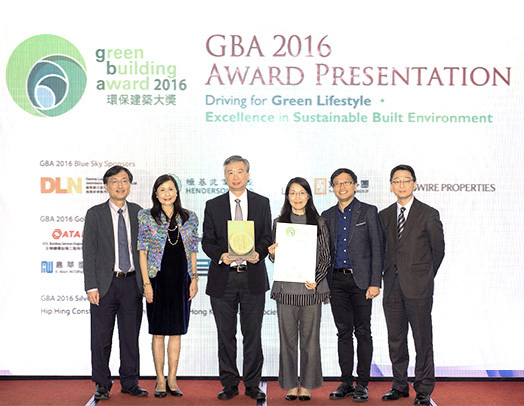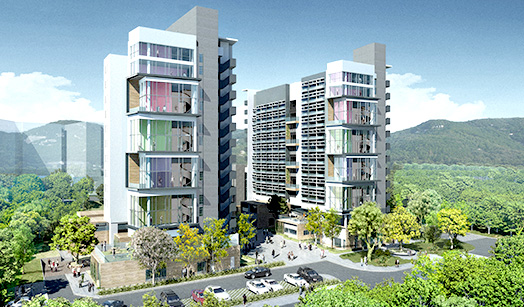
A Green-Hostel Village Nestling by the Hills
At the construction site opposite C.W. Chu College, two new postgraduate halls are emerging from behind the site backdrop. The two hostel blocks, each rising to 12 storeys, face the sightly Tolo Harbour. Thanks to the capital works funding from the Government and a $137 million donation from the Hong Kong Jockey Club’s Charities Trust, the comfortable and eco-friendly hostels to be opened in 2018 will be a new benchmark to sustainable buildings not only at CUHK, but also in Hong Kong.
Green-Building Concepts Galore
Named the ‘Jockey Club Postgraduate Halls 2 & 3’, the buildings under construction are located on the northern campus near Area 39 along Tolo highway. Since the beginning of the project design some five years ago, the Campus Development Office (CDO) has been working in harness with the users and the consultant team to create a ‘green-hostel village’. ‘We started by choosing plants commonly found at the University to give the new plot an ambience that echoes with the main campus. With a variety of flowers in corresponding colours through the seasons, the site would become like a natural extension from the main campus,’ said Mr. Fung Siu-man, Director of CDO.
The hostel blocks feature vertical greening woven through all 12 floors, with sky gardens on alternate floors and along the entire first floor. The greening design is introduced for more than enhanced aesthetics; it also improves ventilation, provides shading and brings in natural lighting, thus minimizing the heat island effect. Green roofs will be built on the multi-purpose hall for students to enjoy organic farming.
Various technologies are adopted to maximize energy efficiency. Mr. Li Sing-cheung, senior engineer of CDO, elaborated, ‘Solar panels are installed all over the rooftop to preheat water for the shower rooms. A rainwater recycling system uses the water collected for irrigation. Through the grey water treatment system, wastewater from washing basins and shower rooms is turned into flush water.’
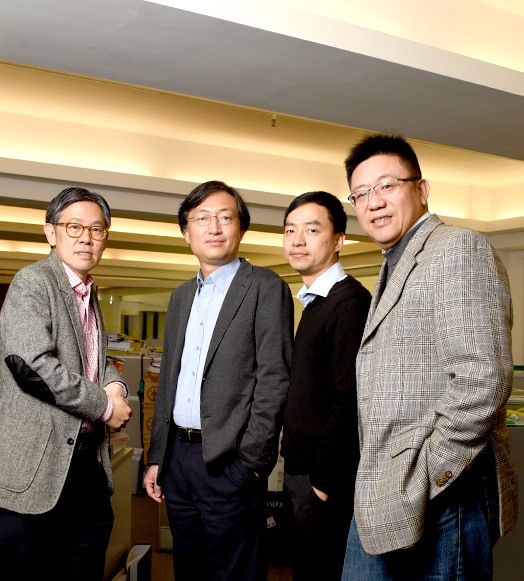
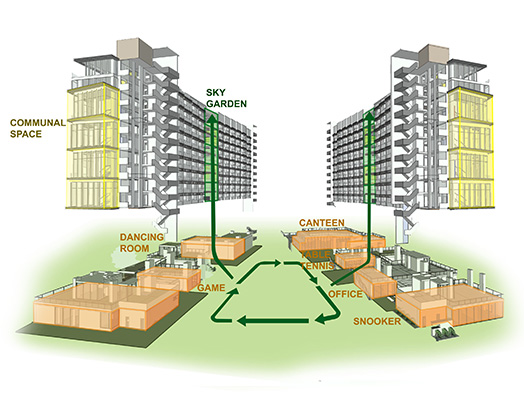
Smart metering is installed in all bedrooms and their energy usage can be checked with the computerized building management system from display panels in the hostel corridors. ‘Residents are given a basic usage allowance each month, which can be topped up at their own expense. When they find out they are using up their allowance faster than their neighbours, they’ll know it’s time to review their own usage behaviour. Instead of relying on the hostel room air con, they may use an electric fan in autumn, or make the best out of the communal lounges to study in summer,’ said Mr Li.
Mr. Stephen Ho, project manager of CDO, added, ‘These eco-friendly facilities can help each building save up to 38% of its annual water consumption and over 30% of its energy usage during the peak electricity demand in June. At the end of the day, all the green hardware is designed to facilitate changes in users’ behaviour.’
Keeping Noise at Bay
Another tough challenge in designing the new hostels is how to achieve noise attenuation as the plot is located next to the railway. Disposition of the communal areas and orientation of the blocks provide the key to resolving the issue. While the hostels are positioned at right angle to the rail line, the north-eastern side closest to the railway is designed to house non-noise-sensitive areas such as stairs and common rooms with double glazing, creating an effective noise barrier for the bedroom wings.
Acoustic windows with double-glazing are installed in all bedrooms. The windows are ingeniously designed in such a way to allow curvilinear airflow into the rooms through the sliding lower glass pane, while deflecting sound waves, which travel in a straight line, with the upper glass panel, so that even as the MTR trains run right in front of the residents, the anticipated sound level in the bedrooms will be as low as the hum of a window-type air conditioner.
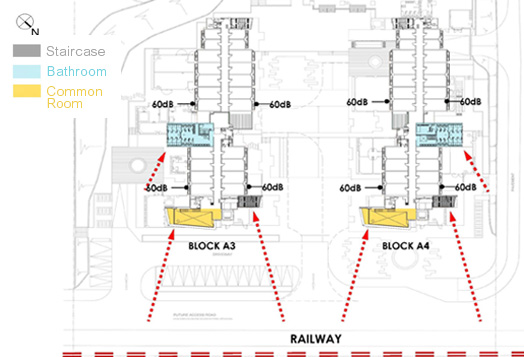
In recognition of its energy-efficient features and comfortable environment, the hostel project has been rated ‘Provisional Platinum’ under the Building Environmental Assessment Method (BEAM) Plus New Buildings [V1.2] assessment by the Hong Kong Green Building Council. ‘Platinum is the highest rating awarded by the Council that requires an overall score of 75. The Jockey Club Postgraduate Halls 2 & 3 achieved a score of 88. This goes to show CUHK’s enormous level of dedication and commitment to sustainable buildings,’ said Mr. Ho.
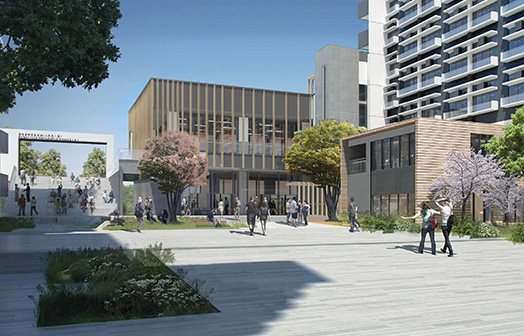
Adding Zest to Area 39
Mr. Fung emphasized that the focus of design should be on overall planning of the entire hostel community: ‘A hierarchy of public open spaces are carefully planned to encourage interactions and enjoyment. Clustering around the Central Piazza is a host of user-friendly communal facilities, including a library, a gym, a canteen and other activity rooms. The Piazza provides entrance from the harbour side, and access to Campus Circuit Road and C.W. Chu College through the grand steps and gateway on the opposite side.
‘The area where the two new hostel blocks and Area 39 are located can accommodate a total of three scientific research facilities and seven hostel blocks. On completion, the area will become a research hub and green-hostel village adjacent to the main campus.’
Spearheading Sustainability
Together with the two new hostel blocks, so far 14 CUHK building projects have been awarded under the BEAM or BEAM Plus New Buildings assessment—six have garnered the highest Platinum rating while another six and two building projects have been accorded Gold and Bronze ratings, respectively.
Apart from the accolades for individual projects, CUHK was honoured in 2016 with a Merit Award under the Green Building Leadership Category in recognition of its exemplary efforts in promoting sustainable development in the local community.
Mr. Fung said, ‘Through our mission towards academic and research excellence and preserving our unique green campus and culture, the University has gradually built up a wealth of knowledge and experience in sustainable architecture and environmental design. Every new project is therefore a great opportunity to make use of our experience while making improvements in the process. CUHK is definitely an ideal ground for the advancement of green building design and sustainable development.’
